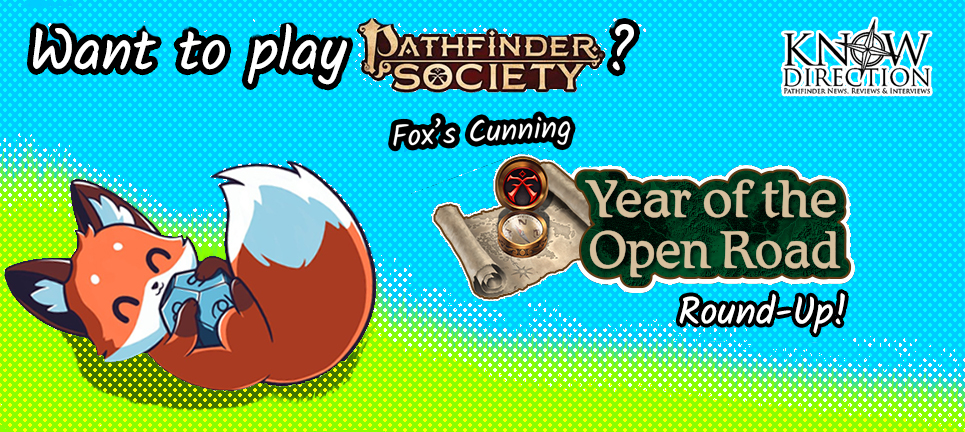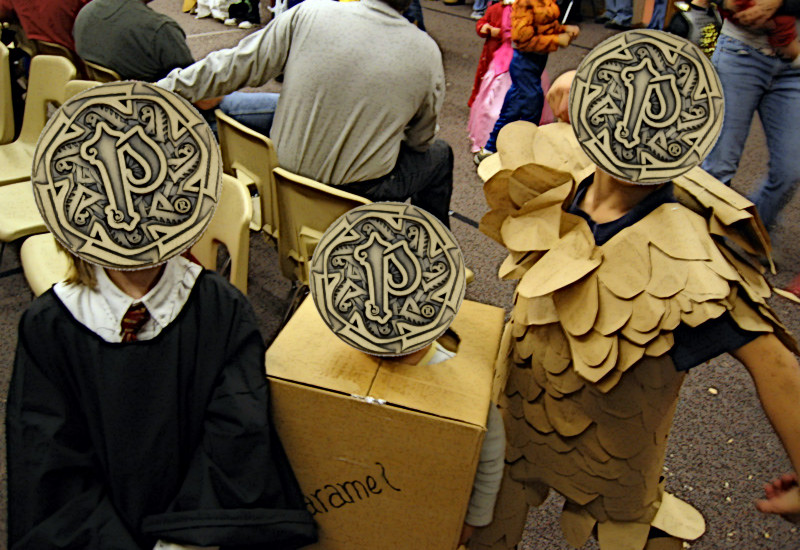Welcome back to Phantasmal Killer, a blog delving into weird and fun game mechanics and how you can take advantage of them to bring new ideas to life at your tabletop. In each article I look at using a game system in unexpected ways to create unique or bizarre characters to pummel your players.
Admit it. We’ve all beaten the villain in a videogame before and said “That was way to easy,” only for the villain to return, powered-up and ten times as challenging. As each iteration of the villain falls, they bounce back bigger and meaner than ever! It’s the anime trope that launched a thousand memes. But it’s also something that tabletop RPGs—mostly rooted in early 20th-century fantasy fiction, rather than video games and anime—don’t capture as well.
Tiered villains are opponents who bounce back immediately after defeat with more power, more health, and posing a far greater threat to the conquering heroes. They provide a fun bait-and-switch for an encounter, as the players think they’ll encounter one threat only to face another, but they also provide a way to raise the narrative stakes of the adventure, as the danger literally escalates before the heroes’ eyes. What they thought was a decisive victory suddenly becomes a far more dire fight for survival. A tiered villain is also a handy tool for “boss battles” that end too quickly and easily thanks to a lucky critical or a bad initiative roll. If your heroes take down the final villain of the storyline too easily, it can feel unsatisfying, and ad-libbing a “final form” for that opponent unleashed by their defeat lets you re-use that un-used statblock.
You can introduce these memorable, multi-stage fights in your own campaign with relatively little work, just by working with the encounter rules that probably already exist. Just keep the following tips in mind:
Give It a Reason
Make sure there’s a reason your villain’s defeat only makes them more powerful. Without a narrative reason that your players can see or figure out, the return and empowerment of an opponent can feel cheap. In Final Fantasy X, Maester Seymour’s spirit can’t move on the the afterlife after his defeat, and so his magic-soaked soul remains behind and transforms into a more powerful monster. In Kung Fu Hustle, being beaten nearly to death clears Sing’s qi pathways and unlocks his natural martial arts genius. Your own explanation can be as esoteric or bizarre as you like, so long as the heroes and their players have a chance to understand what’s going on. Here are a few suggestions:
- A devil-worshiping priest carries an infernal essence in her soul to power her spell. Destruction of her mortal form unleashes the power devil that has been hiding inside her all along.
- A troubled psychic can’t grow in power because they fear the next step, but destruction of his material body severes his ties to the physical world and let him evolve into a being of pure psionic energy.
- A scientist has been using unstable gene therapy to control a degenerative condition, but when the heroes attack, the endorphins and adrenaline throw their carefully-balanced biological systems radically out of alignment.
- A powerful necromancer has been cultivating the ultimate undead using his own body as the crucible. The surge of necrotic energy unleashed by his death is the final ingredient to awaken the abomination inside him.
- A mutant’s power to regenerate comes with the unexpected ability to rapidly evolve in response to threats, and her body responds to death by rebuilding itself stronger and more durable than ever.
- Twisted rituals bond multiple souls to a single villain’s body, and every death only kicks one out and leave room for another to take over, fresh and vital.
You might even elect to use tiered villains for minor encounters, such as a death whose rank-and-file members transform into powerful phantoms upon death. This mechanism encourages players to get creative with how they approach minions and solve problems; blowing up the dark pyramid would only unleash a hoard of undead on the nearby towns.
Pick Two Statblocks
It may seem obvious, but select or create two different statblocks, otherwise your tiered villain is just an ordinary villain with extra lives. Traditionally, your villain’s second form is more powerful than the first (and the third more powerful than the second, and etc), but it may just be that their second form is something the heroes are less-prepared to deal with; heroes who think they’re going to fight a human demagogue might not be equipped to handle the attacks from his angry ghost, for example.
The villain cannot willingly draw out their second form; it can only be unlocked by their defeat. This means heroes who focus on social victories and empathizing with their opponents may be at an advantage when facing tiered villains.
What happens to a villain’s equipment will depend on the situation. Their new form may have all their same gear if their original body transforms or evolves, or left behind if a new, monstrous or ghostly form erupts from them. In games where equipment plays some role in determining a creature’s challenge, try to make up the difference with a few inherent bonuses. Determining what happens to their equipment is also important when you finally calculate how much treasure to award your PCs (if you’re using a system that awards treasure); two tough encounters that effectively only rewards the heroes for one can feel anticlimactic and leave the heroes’ wealth lagging behind if you use tiered villains often or for major events.
Separate Forms = Separate Encounters
It’s important to remember that each form the villain evolves into is its own separate encounter as you determine how much treasure to award, how much XP to grant, and how many encounters your heroes can typically tackle in a day. If your villain works with a team of minions or monsters, it’s best to either track these as a third encounter, or have the tiered villain’s ascension obliterate their underlings and bring new ones into the fight, if only for ease of bookkeeping.
As separate encounters, any ongoing effects your villain may have been experiencing—stun, diseases, poison, mind control, or parasitic ferret infestation—are removed for their new, improved body. The villain generally retains their original mind, including everything they knew about the heroes and their weaknesses, though their expanded power level might make them more charitable to former enemies, offering the a chance to surrender and sere them or otherwise join their renewed villainous cause. If the villain gained any sort of bonus from planning or terrain, they almost certainly retain that advantage after their apotheosis.
Room for Respite
Because the villain’s evolved form is effectively a second encounter, it’s important to give your PCs a moment to recover before the fight begins again. The transformation might be slow—taking long enough that the cleric can channel energy once or twice, or long enough for everyone to cast one spell or drink one potion—or the unleashed energies of the transformation might grant the heroes some side benefit like healing or restoring abilities with limited usages. In 5e you might grant them the equivalent of a short rest. In Mutants & Masterminds you can give everyone a Hero point. In Fantasy AGE you can pass out an extra point of Conviction.
The respite you offer can be significantly longer. The heroes’ first confrontation with the villain might be at the foot of their tower, and their evolved form takes to the tower’s roof to begin some dark ritual—effectively the “final boss battle” happens at both the beginning and the end of the tower-crawl. A tiered villains evolutions might even be punctuations throughout a campaign, as the heroes defeat the villain repeatedly only to unleash a more powerful evolution they must complete even more adventures to confront again.
Variant: The Staged Villain
Rather than evolving into new forms, a tiered villain might instead reflect a villain working through “phases” of their tactics. Fourth edition Dungeons & Dragons introduced the concept of “bloodied,” meaning a creature had lost half or more of its hit points. Powerful creatures could unleash special abilities or new attacks once they were bloodied. The Staged Villain uses the same concept of using the same statblock throughout the fight, but gaining new abilities or unleashing special attacks as their health reduces to certain thresholds.
Staged villains are a way of introducing a tiered villain without resorting to magic, weird science, or other strange narrative elements. In this case the villain is simply a resourceful and tenacious opponents who brings more of their skills and resources to bear as the heroes prove their metal.
Use the same guidelines suggested above for the staged villain, including treating each stage as a separate encounter, but use the same statblock. Add a new ability or tactic with each new iteration as the villain reveals they’ve only been toying with the heroes. A villain may only use their sword to attack for their first stage, then turn to a firearm or call in guards for their second stage, and finally reveal extraordinary insight or supernatural abilities in their third stage.
Among other things, a staged villain provides more “staying power” for opponent types that are otherwise light on health—like swashbucklers, spellcasters, or mad scientists—letting you use them as master villains without having to compensate for their fragility.
Examples – 5e
I have a few possible situations coming up for fifth editions Dungeons & Dragons adventures that would work great as tiered villains.
Gweonne Braugh
Braugh is a desperate mother whose only child is sick with an unknown plague. As a physician and alchemist, she first applied her understanding of medicine to save the child, then turned to prayer, and—even more desperately—hired adventurers to track down a cure. When nothing worked, she tossed aside ethics began applying forbidden blood sciences to save her dying child’s life. She began harvesting precious organs associated with life and purification from angels, unicorns, and other good-aligned beasts, leaving corrupted monsters in her wake. The village knows she must be stopped and the wounded beasts she creates destroyed, but no one is brave enough to try.
To keep the organs alive while she experiments, Gweonne has grafted them into herself, using her body as a living alchemical laboratory. She begins the encounter are a CR 1/4 Apprentice Wizard, assisted by guards or loyal beasts, but once slain the alien organs inside her spill their strange fluids and the surge of healing energy twists her body into a CR 5 Annis Hag (Volo’s Guide to Monsters).
Jenton Malaphore
The wealthiest man in town, Jenton Malaphore is a genuine rags-to-riches story, beginning when a distant relative passed. Leaving him a minor title and a generous allowance. Ever since, Malaphore’s every endeavor has paid out and his enemies meet with the worst luck. What no one in town suspects is that the gadfly gained his extraordinary fortune by signing away his soul to a devil, then using his new resources and alliances to hunt his patron and devour her heart. His actions committed his soul to Hell, but to fill his high-ranking prey’s role, not to serve as her plaything. But until then, Malaphore is ready to enjoy the life he’s “earned,” visiting terrible fortune on anyone who risks his power and prestige.
Ostentatious and fickle, Malaphore falls in love easily, only to grow bored and eventually extract his partners’ souls. He likely comes to the adventurers’ attention when he falls in love with one or more of them and tries to woo them with gifts and grand gestures. He grows frustrated if rebuffed and tries to take what he wants, first with his social resources, then with mercenaries, ad finally with his infernal magic. Malaphore begins as a CR 7 Warlock of the Fiend (Volo’s Guide to Monsters), but if slain his soul becomes a high-ranking official in Hell—high enough to return to the Material Plane to continue his machinations or reclaim his old life. The infernal version of Malaphore is a CR 12 Erinyes Devil (Monster Manual), but can nly return after several weeks of navigating Hellish bureaucracy.
Tulock Scarjaw
Little more than a petty bandit, Tulock is a recurring villain laboring under a terrible curse. He stumbled across the tomb of the ancient wizard Asphodel the Life-Bringer and made off with an amber amulet and fistfuls of coin he found within. He arrived in town to spend freely on drink and sexual favors, but being a belligerent drunk he picks the wrong fight.
The PCs first encounter Tulock early in their career as a CR 1/8 Bandit (Monster Manual), when the drunken treasure hunter takes offense at something the say or do or simply how they look and begins brandishing his sword. Once slain, the Amulet of Asphodel vanishes into the bandit’s body and begins to repair him using whatever materials are on-hand! Tulock returns to several days later as a Flesh Golem with his old intellect and a burning need to hunt his killers. Each time he dies, the Amulet of Asphodel painfully rebuilds Tulock’s body with the materials at hand, progressively transforming him into a Clay Golem, the Stone Golem, and finally an Iron Golem. Only the heart of his original killer can draw the amulet from his chest and restore Tulock from his life of endless, restless agony.






